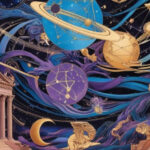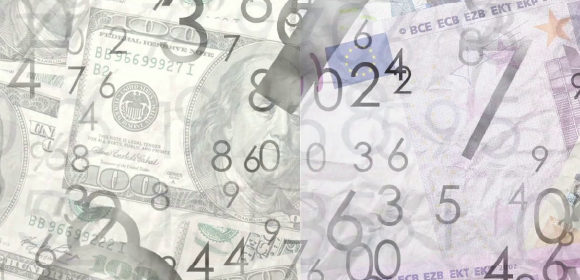In a time where science, spirituality, and art are intersecting in increasingly unexpected ways, the concept of sacred geometry is undergoing a powerful renaissance. From the iconic Flower of Life to the infinite spirals of fractal mathematics, these patterns are being rediscovered not just as artistic motifs or ancient symbols, but as possible keys to understanding the architecture of reality itself.
At the heart of this renewed interest is a growing sense that the universe is not random but deeply ordered — and that this order reveals itself in geometric patterns echoed across nature, the cosmos, the human body, and even consciousness itself.
What Is Sacred Geometry?
Sacred geometry refers to the belief that certain geometric shapes and proportions carry inherent meaning and spiritual significance. These forms — such as circles, spirals, triangles, hexagons, and more complex configurations like the Flower of Life, Metatron’s Cube, and the Sri Yantra — are believed to represent the blueprint of the universe, embedding divine intelligence into matter.
Found across ancient civilizations — from Egyptian pyramids and Greek temples to Mayan calendars and Hindu mandalas — sacred geometry was historically viewed as a bridge between the material and the metaphysical. In modern times, it’s seen not only as symbolic, but also potentially scientific — as evidence that the same patterns recur across vastly different scales, from atoms to galaxies.
The Rise of Fractal Geometry
Closely related to sacred geometry is the concept of fractals — infinitely complex patterns that repeat at every scale. Unlike traditional Euclidean geometry, which deals with simple shapes, fractal geometry reveals the chaotic, self-similar structure of the natural world.
Discovered and popularized in the 20th century by mathematician Benoît Mandelbrot, fractals can be found in coastlines, snowflakes, clouds, lightning bolts, trees, lungs, and even neural networks. The iconic Mandelbrot Set, for instance, is a visual expression of infinite complexity contained within a finite boundary — an idea that deeply resonates with metaphysical teachings about the microcosm reflecting the macrocosm.
Today, fractals are seen by many as a digital-age expression of sacred geometry: living patterns of energy and form, now made visible through computer modelling and digital art.
Flower of Life: A Timeless Blueprint
Of all sacred symbols, the Flower of Life has become the most popular and widely recognized in modern spiritual and artistic circles. Composed of overlapping circles arranged in a hexagonal symmetry, this ancient motif is believed to encode the fundamental forms of space, time, and consciousness.
Found etched into temples in Egypt, India, and China — as well as in Leonardo da Vinci’s sketches — the Flower of Life is often referred to as a map of creation, from which other sacred shapes like the Seed of Life, Tree of Life, and Metatron’s Cube emerge.
Some believe that meditating on or incorporating these patterns can align one’s energy field with the universal matrix, enhancing intuition, spiritual clarity, and even physical well-being.
Sacred Geometry in Digital Art and Architecture
In our digital age, sacred geometry has found new life in generative art, 3D modelling, and architectural design. Visionary artists like Alex Grey, Android Jones, and many NFT creators now use fractal and geometric themes to express transcendent states of consciousness.
Meanwhile, architects and designers are revisiting sacred principles of proportion and harmony. The Golden Ratio (Phi) — approximately 1.618 — is being used to create structures that feel more natural and energetically balanced. Some even incorporate biomimicry and parametric design to model buildings on organic, geometric principles, aiming to merge form with function in a spiritually resonant way.
The emergence of VR and AR platforms has also allowed people to step inside geometrically inspired immersive spaces — exploring entire fractal environments or meditative simulations based on sacred patterns.
Geometry as a Language of Consciousness
More than just art or symbolism, many believe sacred geometry is a universal language — one that transcends culture, religion, and even time. These patterns, encoded into the structure of matter and energy, may be how consciousness itself organizes and expresses itself.
For example, the structure of DNA, the orbit of planets, and even the neural layout of the brain all appear to follow geometric ratios and patterns. In metaphysical terms, this suggests that geometry is how the divine expresses itself in the physical — a bridge between energy and form.
Meditative practices that involve visualizing or contemplating these forms are said to awaken higher consciousness, connect individuals with universal energy, and realign them with the natural flow of life.
Scientific and Spiritual Synchronicity
While traditional science may not formally embrace the spiritual implications of sacred geometry, there’s a growing body of interdisciplinary interest. Quantum physics, string theory, and cosmology have all begun to hint at the deep structure and symmetry underlying the cosmos — ideas that mirror what sacred traditions have said for millennia.
Some researchers are even exploring the role of geometry in vibration, sound healing, and light frequency therapy, suggesting that geometric resonance may have practical applications for health and consciousness.
Final Thoughts: A Reawakening to Pattern
The renewed interest in sacred geometry and fractal universes isn’t just a trend — it’s a reawakening to something deeply embedded in our collective psyche. Whether used in healing, creativity, science, or spiritual exploration, these patterns invite us to see the universe not as a chaotic accident, but as a living, breathing organism governed by intelligence, beauty, and harmony.
In an increasingly fragmented world, sacred geometry offers a vision of unity — reminding us that everything is connected, and everything has a place within the pattern.








